Jesse Darling; Hannah Quinlan & Rosie Hastings
Arcadia Missa
An inspired combination of works, both obliquely referring to community. Darling continues recent works drawing on Modernist aesthetics, in which found objects are given anthropomorphic qualities. Red children’s chairs are placed on high, powder-coated steel legs; entitled March of the Valedictorians (2016), this piece has an aggressive, gang-like feel, but there is a fragility, too, in the uneven, even rickety legs. Quinlan and Hastings’s sunny aluminium sculpture Attitude (2016), based on a digital drawing, evokes cheery murals or a decorative gate to a community facility. The work relates to their Gay Bar Directory, a film archive of the UK’s gay bar scene, made in the face of numerous closures. You could view the LGBT flag in Attitude as an emblem of defiance and an elegiac nod to a fast-disappearing utopia.
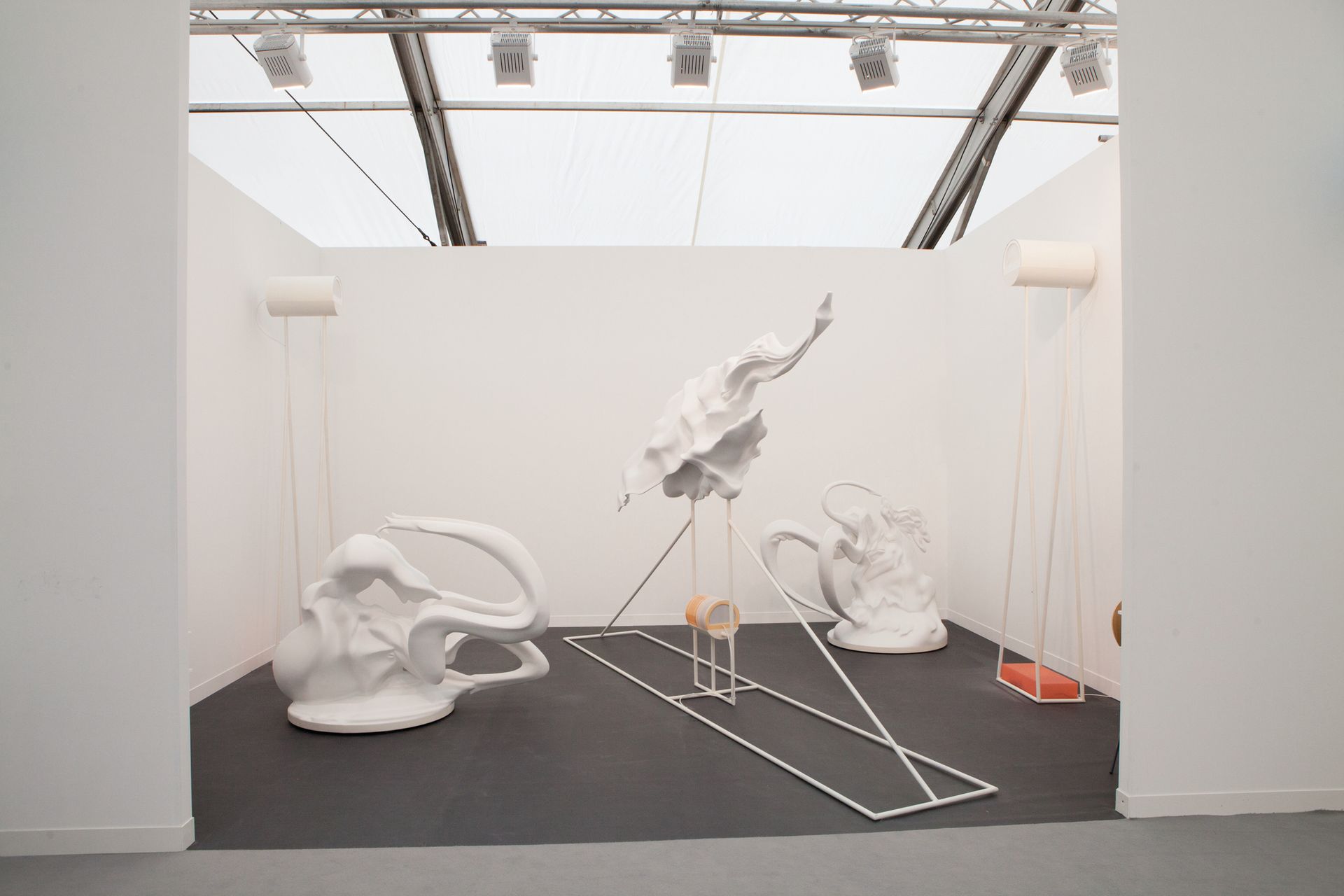
Marguerite Humeau
Clearing
Humeau’s is a fast-rising star. Describing herself as an “Indiana Jones in Google times”, she has created a fictional world in which elephants are the first sentient beings. Research and conversations with zoologists and palaeontologists, among others, have led Humeau to fashion dramatic and futuristic forms from high-density foam coated in latex resin and white spray paint. This booth shows the death of her fantastical civilisation. Two animals are self-cannibalising, while a tall central elephant is depicted at the moment it eats a poisonous flower; its final agonised breath emerges from a speaker below the sculpture. Humeau has created an extraordinary ecosystem: visually alluring and absorbing in concept.
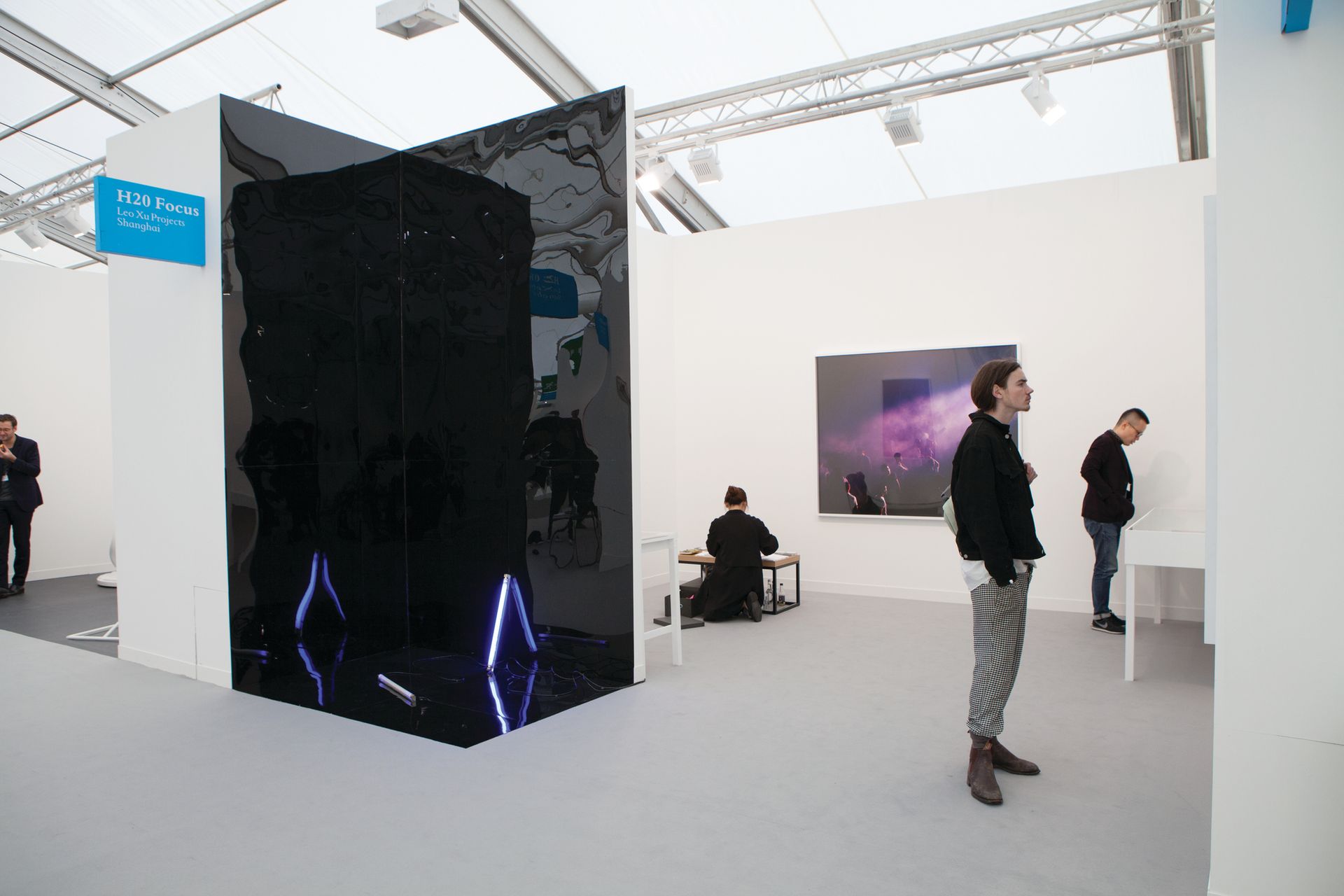
Chen Wei
Leo Xu Projects
Chen’s work comprises a sculptural installation and photographs that draw on nightclub imagery. Against mirrored black tiles are two fluorescent blue lights; one pulses with Morse code, spelling out Arthur Rimbaud’s poem The Drunken Boat. Elsewhere are photographs of dancers and club décor that appear to be documenting club culture, in a style evoking the work of Wolfgang Tillmans—part documentary, part formal experiment. But they are elaborately choreographed by the artist: we see a fiction fuelled by Chen’s romantic imaginings of Chinese youth culture in the 1990s, as the country underwent huge transformation. What appears at first to capture abandon is, in reality, immaculately controlled.
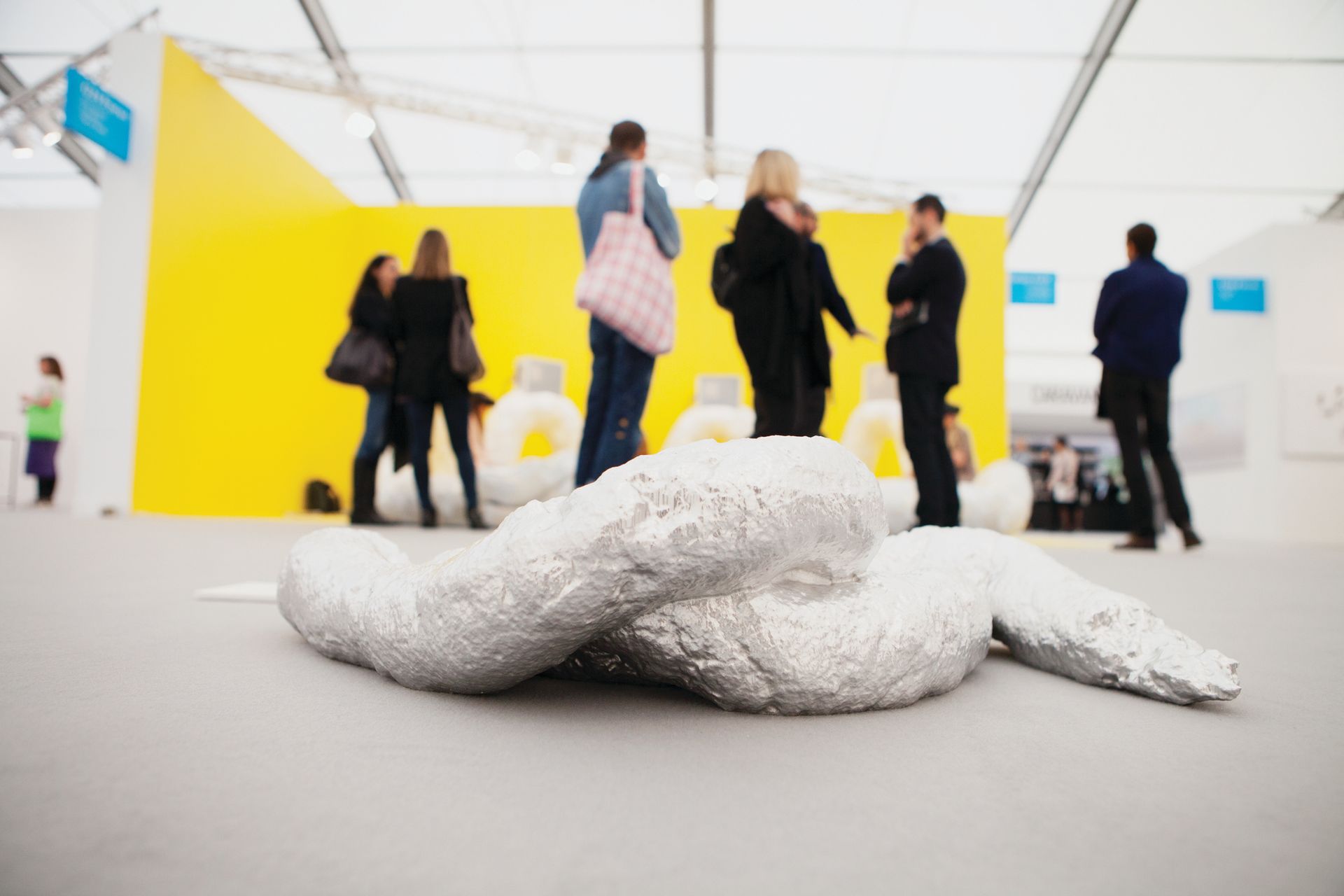
Ken Kagami
Misako & Rosen
Ken Kagami is the artist who, for Frieze Projects in 2015, made drawings of fair-goers’ genitals as he imagined them. Here, humour continues to dominate his work. Squashed Shit (2016) is a hugely enlarged turd, bearing the imprint of a shoe’s sole, that Kagami has cast in solid aluminium. It weighs 50kg. Nearby are his drawings, also with a scatological bent: in one, Snoopy is defecating on Charlie Brown.
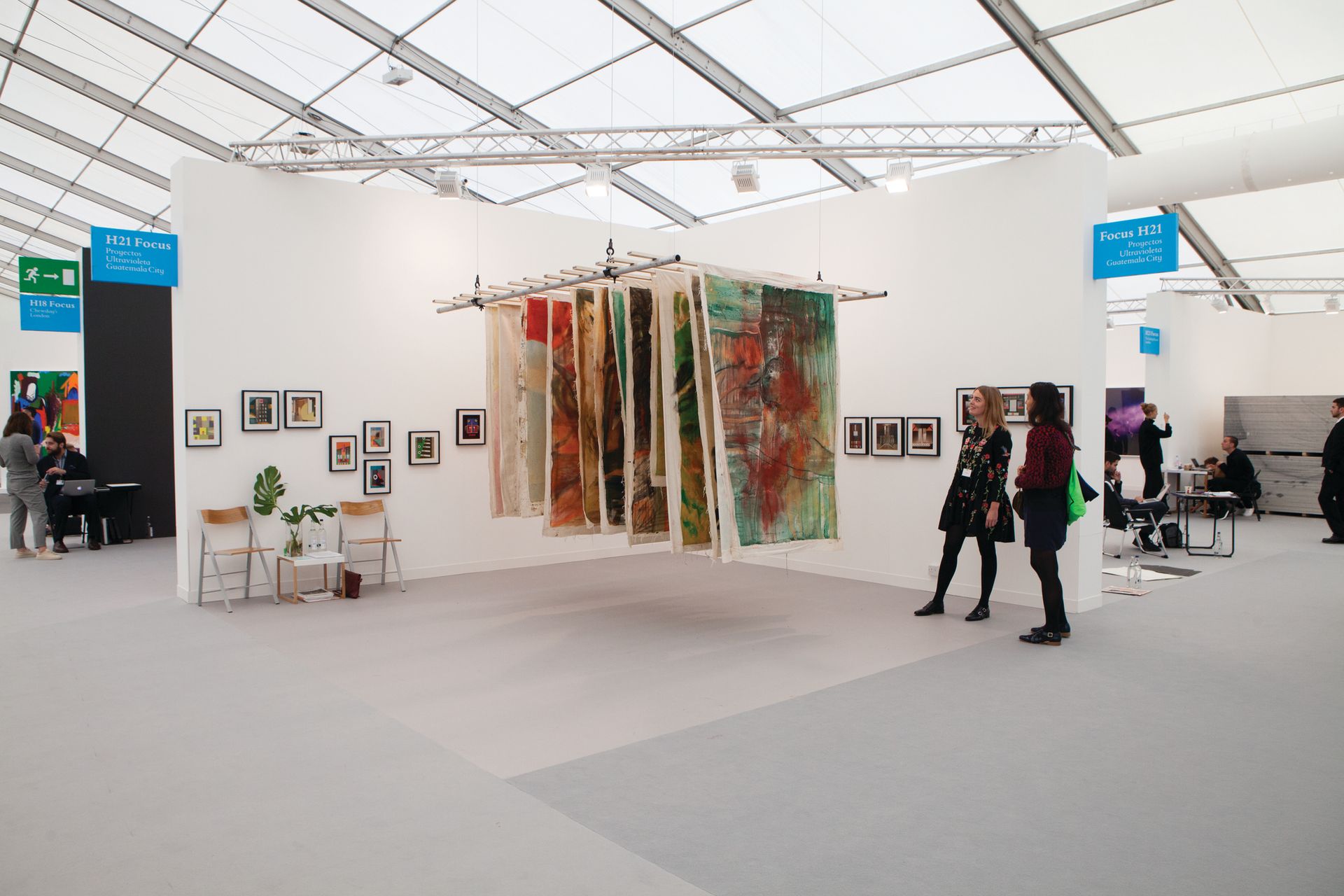
Vivian Suter and Elisabeth Wild
Proyectos Ultravioleta
Wild, born in 1922, left Switzerland with her family in the 1930s, fleeing the Nazis for Buenos Aires. Suter, her daughter, was born there, and although they later returned to Switzerland, both now live on Lake Atitlán in Guatemala. Their art differs greatly but intrigues in equal measure. Wild’s small but elegant collages, made from consumer magazines, evoke Constructivist and Bauhaus paintings and designs. Suter’s canvases are more expressive and elemental, containing twigs, feathers and other organic materials picked up when they are left outside after completion. They hang from a rack and can be touched and walked through: a rare tactile moment at the fair.
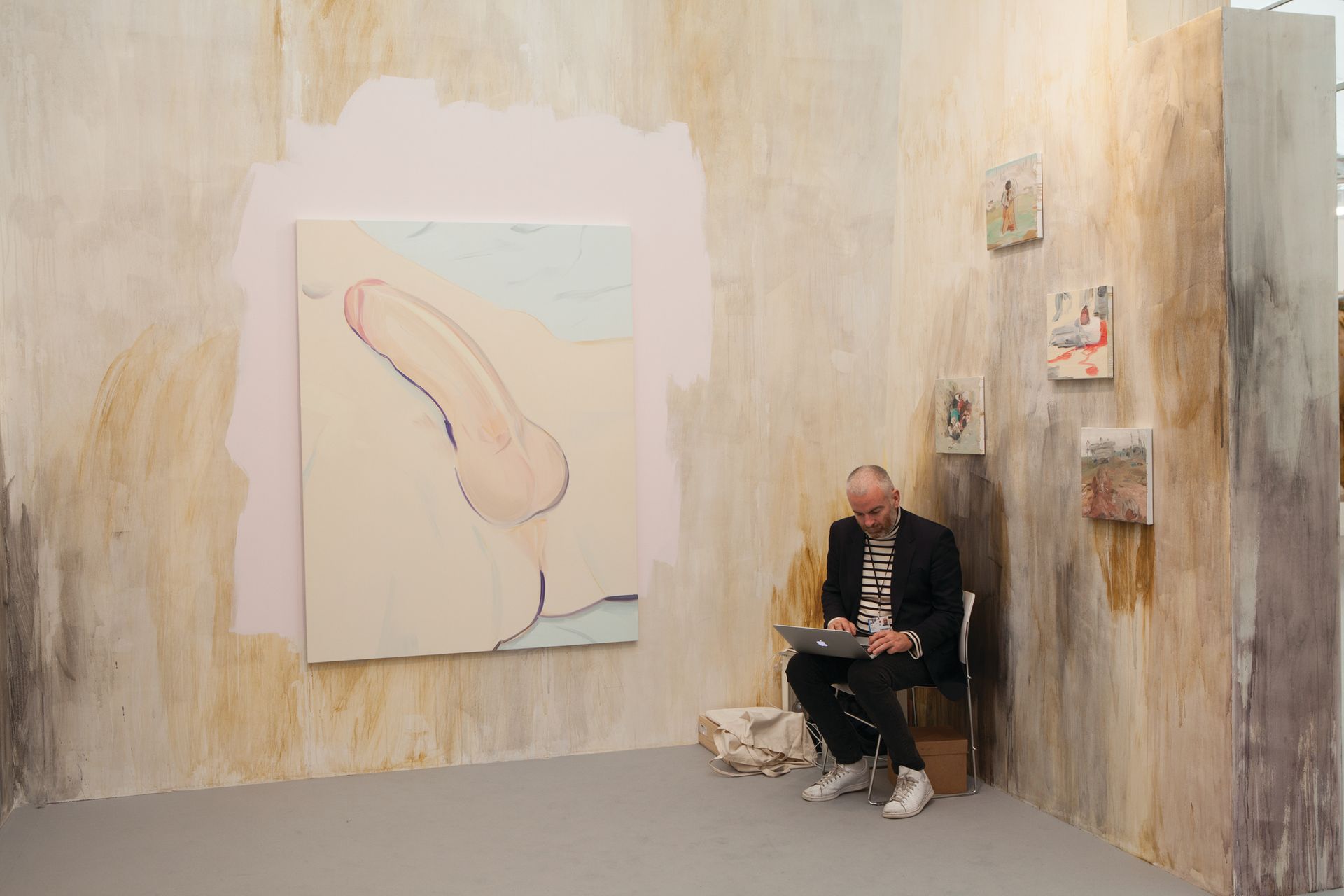
Celia Hempton
Southard Reid
A provocative booth by the young British artist, whose recent paintings are hung on shaped walls covered in gestural painted marks made in situ at Frieze. Among them are large male nudes, focusing on the models’ penises. Made from life, they continue a series that began with depictions of her boyfriend, the artist Eddie Peake. Clear and candy-coloured, they contrast strongly with small paintings based on images Hempton found online, including depictions of an Isil beheading. History paintings for our time, these rough, dashed-off canvases speak to the immediacy of the source imagery and the inadequacy of responding to it in paint.

